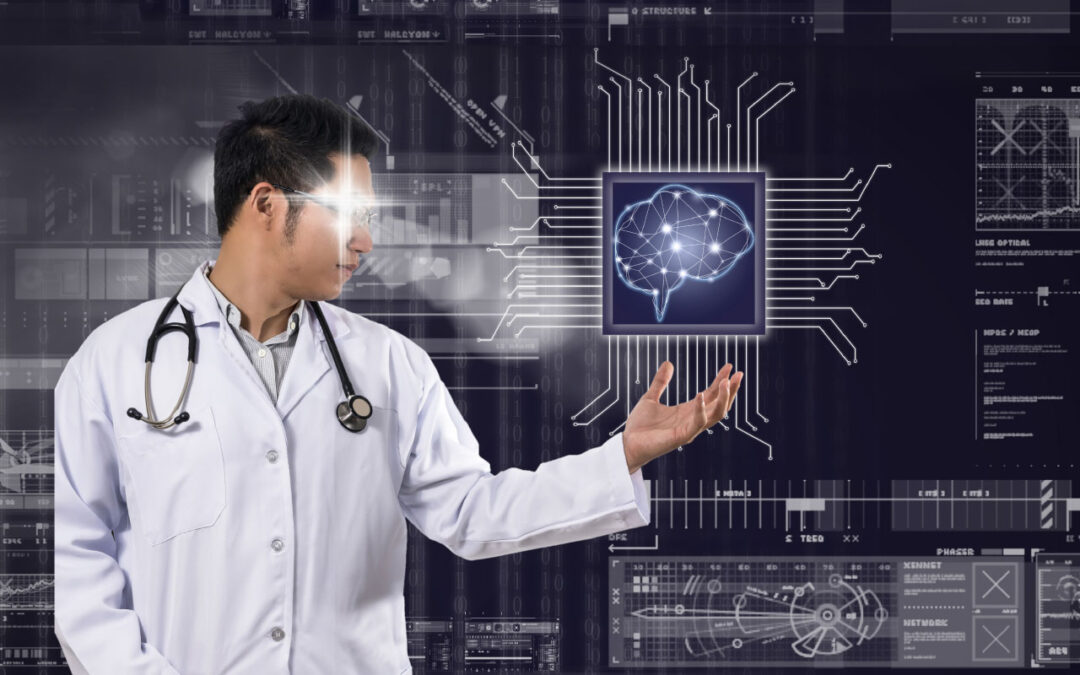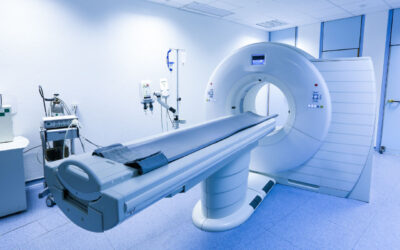
By Matt Skoufalos
In 2023, a group of researchers at the University of Arkansas for Medical Sciences conducted what they described as “a social listening study” of medical students discussing careers in radiology on the Internet forum r/medicalschool, a subgroup of the Reddit.com network. Their stated purpose was to delve into student perceptions of radiology, comparing stated attitudes towards the specialty vis-à-vis other potential career paths in medicine.
The research relied upon natural language processing (NLP) software “to identify positive and negative sentiment associated with the key factors associated with a career in radiology.” Among the top keywords associated with negative sentiment scores was the phrase “AI,” or artificial intelligence. The researchers concluded that “the fear that the advancement of machine learning could lead to a decline in job opportunities for radiologists in the future has made radiology a less desirable specialty for some students considering entering the field.”
Whether that takeaway is based on older anxieties reflected in the breadth of commentary upon which the study was sourced – a 13-year window of discussions from 2009 to 2022 – and not necessarily any shift in attitudes since, the consideration nonetheless may persist among some segment of medical students that AI-powered technologies are an unwelcome and possibly prohibitive new reality of the radiology profession.
If that’s a contemporary concern, it may be one that comes to influence future career paths in the medical imaging space. The use of artificial intelligence in radiology isn’t slowing any time soon; in fact, its continued expansion is a near certainty. But is AI-powered technology the career (interest) killer that it’s been made out to be?
Peter Shen, head of digital health North America for Siemens Healthineers, thinks part of the frustration around the buzzword-y topic of AI has less to do with the potential value of the technology itself and far more to do with the problems it might best be suited to solve.
“What I’m hearing anecdotally from radiologists and others is a frustration on the dependency on managing all this clinical data that’s come before them,” Shen said. “I think trying to either input it or find clinical data on the patient through the various IT systems that they interact with, that’s maybe creating some of the fatigue we’re seeing.”
In his discussions with physicians, Shen said many may still labor “to get the full picture of the patient” in their diagnostic efforts. Even if radiologists have accurate imaging studies and notes from referring physicians, they might not easily be able to compile other relevant patient information from different departments within their own health system, or to easily access medical histories from electronic health records (EHRs). Shen recalled a conversation with one physician, who described the multidisciplinary tumor boards at their institution as chaotic.
“They said, ‘We’re shouting medical record numbers across the room so somebody can go into that EHR system to pull that patient and see it in context with the radiology image that’s on the screen,’ ” Shen related.
“I think that’s where we’re seeing some of these frustrations with the systems,” he said; “I don’t think it’s directed specifically at AI. We have all these different, siloed pieces of data that clinicians want to have access to so they can make that personalized treatment decision for their patients. These IT systems are not necessarily talking to one another.”
Shen believes that emerging, AI-powered technologies can help to meet physicians’ demands for fuller pictures of their patients’ individualized needs across various spectra of clinical evaluations, as well as deliver treatments that are tailored to the individual circumstances of those patients.
“We’re seeing a lot of discussion about what I would call multimodal AI activity,” Shen said: “AI not just used in the discipline of radiology, but in combination with radiology imaging or pathology imaging. The challenge is bringing this multidisciplinary data together, and having AI help that clinician make that more personalized treatment.”
As AI-powered technologies continue to emerge, the business case for their application to the data-rich environment of medical imaging turns on the opportunity that they may help contextualize different, siloed pieces of clinical data. Such technologies can be especially useful if they follow open-standard cataloguing of such data while maintaining their native formats, and ensuring that clinical information is preserved in the act of compiling everything.
“It’s about making that data actionable,” Shen said. “Can you leverage tools like AI to derive some sort of clinical conclusion by taking a look at all this multimodal data, and leveraging it to make these different clinical decisions?”
Shen further believes that the next generation of health care workers has already developed at least some familiarity with AI-powered technologies in their personal lives outside of the scope of imaging. Whether in interactions with public demonstration projects like ChatGPT, BingAI, or Midjourney, it’s likely that the new crop of imaging professionals already will have had at least some casual interaction with AI in a broader, global context before those people experience AI in a medical environment. Those early, casual experiences may have the potential to de-stigmatize the technology for them later in their careers, when AI-powered software becomes more professionally relevant.
“AI technology itself is not inhibiting attraction to our particular segment of health care,” Shen said. “But as the next generation becomes more dependent on a technology like AI, those future health care workers do need to make sure that they still have the clinical understanding as to why the algorithm came to the clinical conclusion that it’s suggesting.”
“I think sometimes we forget that it’s not just teaching the radiologist to use the AI, but it’s how to use the AI, and that they understand the rationale behind why AI has made that clinical decision or has come to that conclusion that the algorithm has made,” he said.
“In terms of transparency and ‘removing the black box’ around artificial intelligence, we see that as an important aspect of driving responsible AI – not just teaching our-end users how to use these AI applications, but also educating our users as to why and how they’re coming to the conclusion that they’re coming towards.”
How AI is positioned in the clinical workflow has a lot to do with the conceit of “responsible” AI, Shen said; a notion that encapsulates the back-end work that goes into training machine-learning algorithms to minimize implicit bias, and extends to the adoption of AI-powered solutions in the clinical setting. Far from a “set it and forget it” approach, AI processes are certainly capable of tremendous accuracy, specificity, and speed; however, without attention to the boundaries of those processes to which it is applied – including end-user education – confidence in the conclusions that they draw may not be high, or even exist at all. A successful relationship among AI-powered software and the physician team that helps patients make the best decisions for their health care involves assuring its place as a companion to the existing processes, and not a replacement for a strong physician-patient relationship.
“We recognize that there is still a valuable relationship between the physician and the patient, and that trusting relationship has to be preserved,” Shen said. “So, how do you inject that AI technology into that relationship? That AI solution is now backing up that physician with quantitative and qualitative data that inform a higher level of confidence. It can be that partner that’s backing up the physician in their relationship with the patient.”
Although subsequent generations of clinical professionals may have less of an apprehension around AI-powered technologies if they’ve grown up with them personally and professionally, in the future, Shen said the chief concern around AI may shift to certifying that clinicians and the teams that enable AI-powered decision support understand not to take the technology for granted.
“Pathology is going through this digital transformation that radiology went through 20 years ago,” he said. “I think the potential excitement for people getting into this space, and even for radiology today, is the opportunity for technology like AI to become a solution that can take in all this additional clinical information, and then create this quantitative or qualitative clinical data that that clinician wouldn’t have the capacity to gather on their own. Then, you’d get broader context about that patient and the patient’s history, the other interactions that patient has had in the health system, and be able to summarize that information and put it in context with the exam for that patient.”
The utility of those technologies can also vary based on the environments in which it’s deployed. Shen points out that the presumption of available, digital clinical information that’s somehow siloed from the imaging space might not be as abundant in certain environments, be they rural health care centers, community hospitals, or any circumstance designed to support an underserved population.
“That creates even more challenges for that radiologist owing to the manual effort that they have to do to gather this information about the patient,” Shen said. “This is where AI can do a lot of that work of gathering the data; the repetitive work of measuring, contouring, characterizing certain things, freeing up the radiologist to spend more time with the patient. We see AI having a significant impact in health systems that serve patients in rural and underserved populations.”
Morris Panner, president of the Raleigh, North Carolina, and Montréal, Quebec-based Intelerad Medical Systems, believes that the utility of AI-powered technologies doesn’t just lie with clinical decision-making support or workflow enhancements, but also in freeing up health care professionals to devote their time and resources to the most demanding aspects of their job.
“The idea really is that we’re at the cusp of yet another pretty interesting technological revolution,” Panner said. “Technological revolutions typically appear to be job-killers, and then end up to be job-expanders. Initially, people were concerned that they could not expect to have a long career because machines would replace them, but these tools expand peoples’ ability to do what they do best with creativity and insight.”
Rather than devoting a significant amount of the workday to tasks like measurements, queuing, and cross-vendor study comparisons, Panner foresees the utility of AI-powered technologies in moving towards precision, or personalized, medicine by helping to free up radiologists to apply their time and energies to making higher-level assessments about their patients’ clinical conditions.
“People who said, ‘A machine is going to be able to detect this or that composition better than me,’ that’s not what medicine is about, and it’s not what human creativity is about,” he said. “We’re going to figure out things that we couldn’t imagine.”
Panner pointed to the future expectations of a generation of multidisciplinary physicians who may leverage their health care backgrounds as entry points into different work environments, be they technology- or practice-driven. In an era of consolidating patient pools, health systems, and physician networks, the shift towards information management will inform even more tomorrow than it does at present.
“Ten or 20 years ago, you would have seen more physicians trying to set up a private practice and become a small to medium-sized business owner,” Panner said. “Now you see more and more physicians joining big practices, or academics. They’re focused on being part of an effort to change the way information is used in their practice.”
“I think it’s a good thing; it’s a different thing,” he said. “Every generation of physicians has a different focus. You’re getting a generation of physicians today who are multidisciplinary by nature. They have degrees in engineering, or mathematics, or computer science, or other things that make them think very broadly. That’s an expanded view of what a physician can do and can contribute.”









